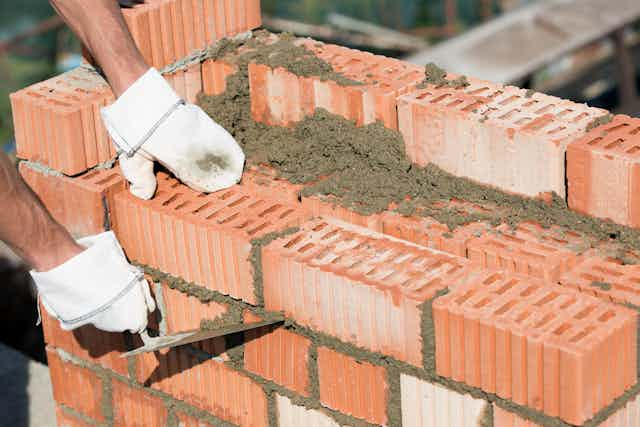More and more people of all ages are unable to buy their own home in Britain, and there is no denying the country is in the grip of a nationwide housing crisis.
The main “solutions” put forward by the government so far have focused on how to encourage the house building industry to build more homes, and faster. But we need to move away from these traditional notions of developer-led housing and instead encourage more self-building.
Already in Britain self-builders build more homes than the largest individual house-builder, but despite these figures, it is still considered a marginal activity and an individual choice rather than a potential large-scale policy solution.
This is short sighted because self-build is a good way to develop more appropriate housing which meets residents’ demands and desires while also being affordable.

In European countries self-build is the norm; in France and Belgium it accounts for about 50% of all new building and in Sweden about a third of new house building is self-built – compare that with England where the figure stands at less than 10%.
We are crying out for more self-build housing in Britain, not only as a way to address the housing shortage but also as a way to deliver low carbon lifestyles – something conventional house construction has failed to do.
Close to home
What is considered self-build varies internationally, but it is generally when a resident has built all or part of their home, sometimes working with or employing others during the build. In Australia, for example, the term custom build more accurately describes how a lot of new houses are built.
With custom build, a developer offers two or three design options and the customer chooses a design and the number of different rooms they want. The difference between self-build and custom-build is the level of resident responsibility, organising and interaction. But all varieties offer useful options for the provision of more affordable housing.

Many people build their own homes with limited building experience, but are keen to get involved because they get to choose the layout, materials and aesthetics of their home – plus self-build is often a much cheaper way to get on the housing ladder.
With residents taking on all, or some of, the jobs themselves and moving away from reliance on the brick – the use of cheaper and quicker methods like prefabricated systems, reclaimed materials, or straw-bales can reduce costs and cut out the need for a company to make a profit.
The significant cost of land can be also mitigated with self-build by developing communal land ownership structures that make it available for affordable housing. And costs can be lowered even further when a collective builds homes, such as co-housing groups, who share the purchase of land, infrastructure and building.
Building for the future
Despite the low number of self-builds, Britain already has a broad variety of homes built in this way – from the large detached houses featured on programmes such as Grand Designs to numerous small homes crafted from low-cost, natural or reclaimed materials.
In an attempt to create housing for local residents some councils have started to allocate land for self-build housing, and others have created exemptions in planning legislation that allow certain forms of self-building in places normally denied building permission.
To tackle the housing crisis we need a complete rethink of the way we build houses in Britain. Self-building shouldn’t be for the reserve of the mega rich, or those looking for a project in retirement. Instead young people, families, couples, anyone should be able to build their own home.

We need to look to our European neighbours to learn a thing or two about self-building and shared ownership. We need to learn how to minimise the amount of materials required by building smaller individuals houses with shared communal space for gardens, laundry, workshops and storage.
And instead of purchasing freehold we could roll out more stakeholder ownership models – just like Lilac in Leeds. At Lilac costs are linked to ability to pay and residents only pay a housing charge equivalent to 35% of their net income. Meaning the higher earners subsidise those on lower incomes.
With a rise in self-build housing we could build our way out of the current housing crisis – but maybe more importantly, we could also avoid a repeat of it in the future.

